Louis has been in touch – he’s very cleverly ‘created’ a Marklin analog transformer:
“Hi Al
I am 65 years old and been on retirement for the last two years in Cape Town SA.
About a year ago I started on my first layout that is in a 4 x 4 meter (13 x 13 feet) room.
The last layout I worked on was in the sixties with my dad and I still have all the trains and tracks of that layout. These are all Marklin analog trains from about 1956 to 1965.
The layout has three loops and each loop can run two trains independently. This is possible by using the centre rail on the tracks for steam and diesel locos and the catenary system for the electric locos.
As everybody always want to see the track plan, I included it below. The layout is called CJH Junction in memory of my dad.
Because the trains are all analog AC and all turnouts and signals are electro mechanical I decided to keep the locos analog but use a computer system to control everything else. I am using the Adroit SCADA software that is used to control industrial sites.
It is even used in nuclear plants in Britain and by the Royal Navy. I am using it in the demo mode where there are 20000 inputs available for two hours before scanning stops. You only need to stop and start the server to have another 2 hours.
Interfacing to the layout, I had to develop electronics to control the turnouts and signals. These units are based on the Arduino Nano micro controller using software that I develop for these boards.
Below are some of the boards. The two on the left are multi input / output units and the pins are multi functional and can be programmed via the SCADA system. These include servo control, motor control, analog outputs, pulsed and latched outputs and sensing inputs.
The two units on the right have 6 digital controls and a MP3 player module. The one is used to play disco music at the town’s hotel and the other music at the church. The first song of the church is a single bell ring.
The SCADA system control the bell, ringing it the hour number on the hour and once on the half hour. I use the ringing of the bell to tell me the time when I am working in the workshop next to the train room.
There are other types of boards implementing other functionalities; these are railway crossing controls, keyboard inputs, traffic signal control and pedestrian crossing control. Power to the boards is 18V AC when controlling turnouts or 13V DC or above when 18V AC is not nearby. All DC voltages needed for the boards are generated on the boards, eliminating the need for multiple power supplies.
Below are some photos of the layout for my Marklin analog transformer:
Table 01 with town on top of mountain – Right bottom of track plan
Table 03 with planned mine where the tree is. – Left bottom of track plan
Table 02 – Back part between tables 1 & 3. The front section will be the station.
If anybody wants more information or questions on my Marklin analog transformer, I will gladly provide it.
I have also put together a quick How To make pine trees if anybody is interested. I estimate that it will cost me about 5 dollars or less to make about a 100 trees.
Regards
Louis”
“Hello Al,
Like so many model railroaders I have decided to pick up the hobby in my retirement years.
As an adolescent I had a Lionel .027 layout but it was little more than one big oval with a side track or two and my Dad took care of the wiring issues. Later my son’s and I had an HO layout, but again it was a large oval with a couple of side spurs so I had no issues with the wiring.
Now that I am retired I wanted to rekindle some of the creative aspects of my personality and model railroading seemed like a good way to be creative. Two Christmases ago my wife gave me a Bachmann N gauge starter set, but a simple oval simply was not going to be sufficient. Thankfully my loving wife of 44 years is also very creative and she liked the idea of modeling a train layout so she did not object too strenuously when I started buying more track, engines, cars etc. Today I have a layout that is approximately 4ft x 7ft with four ovals nested inside the other.
Early on I found your blog and I have learned a great deal and enjoyed watching the videos from so many of your contributors. I purchased your e-publications and I have purchased a fairly large number of the paper buildings. My layout does not represent any specific line but it is geared towards an old west theme and many of the paper buildings work very well for my model. My wife and I very much enjoy watching Jim (I hope I have his name correct) do his tutorials on how to construct and customize these structures, he is a character and we like him very much!
The problem I am having is with the wiring of my switches. I have power controllers for each loop but I don’t really understand how to isolate each loop to it’s own control/power box while allowing the train to change from one track line to another. I know how to power the switch control but the use of insulating rail connectors and maintaining polarity eludes me. Can you or one of your contributors help me learn how to do this correctly?
Thank you for your help. Just for the record my wife and I retired six years ago and we down sized considerably. This is why I went to N gauge because it accommodates my ambitions while fitting the space available. We live in South Carolina (obviously U.S) in Murrell’s Inlet, about a mile as the crow flies from the beach. I can sit on my back porch, sipping my tea, and hear the waves on the beach. Life is simple and very good, mid-November and I am still wearing shorts and a T-shirt! Gotta love it!
Ed”
A huge thanks to Louis for sharing his Marklin analog transformer – my word, there is some clever stuff going on there. And yes, Louis, we’d love to learn more about it.
And who can help Ed? It’s a question that comes up a fair bit in my inbox.
That’s all for today folks.
Please do keep ’em coming.
And if today is the day you get started on your layout, the Beginner’s Guide is here.
Best
Al
PS Latest ebay cheat sheet is here.
PPS More HO scale train layouts here if that’s your thing.

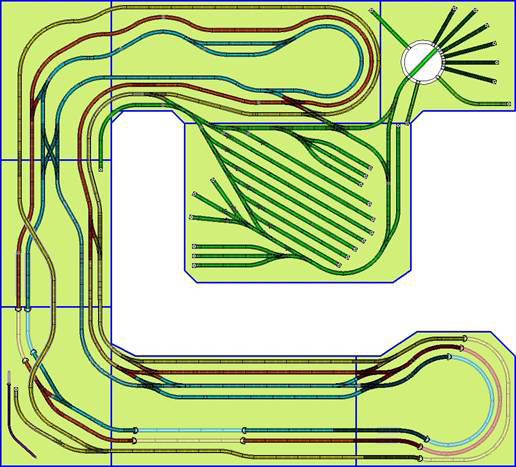
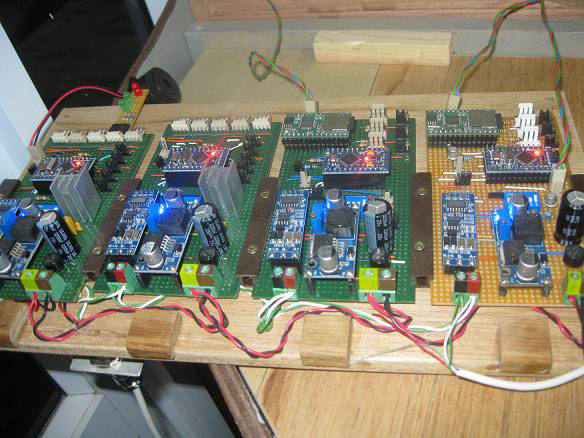
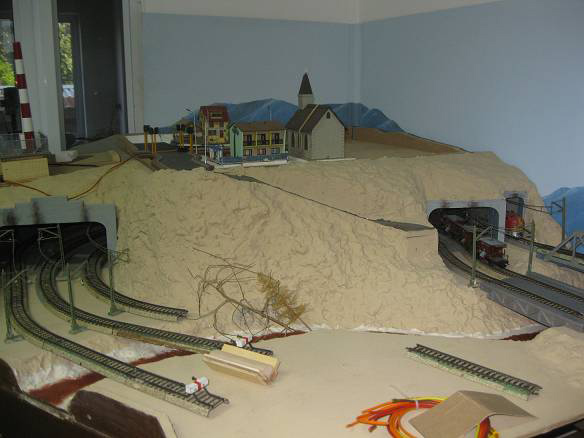
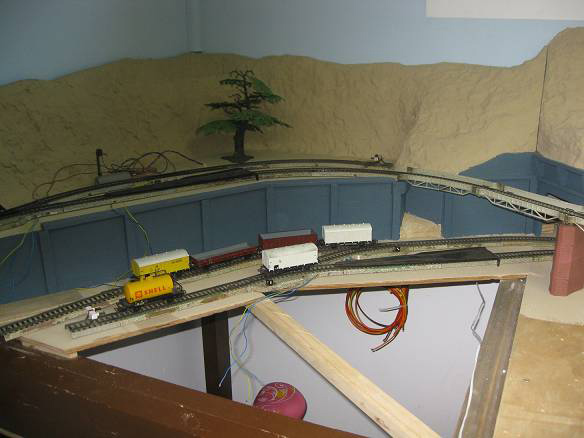
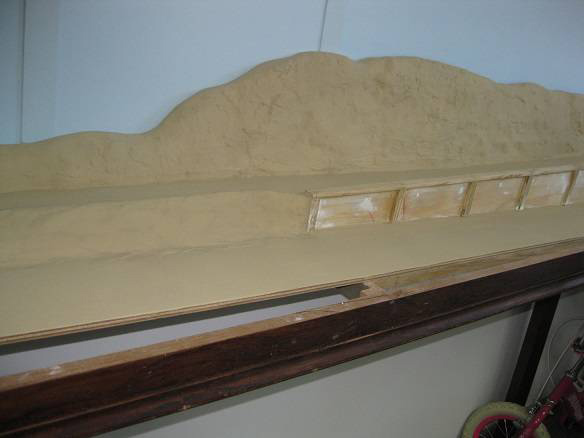


Louis, I’m so envious of your knowledge of electricity and how you develope the controls that you refer to. I always say that my railroad would be so much better if I only knew SOMETHING about electricity. I can’t tell you how happy I am that my trains just run each day without derailing……. I would ask for advice but the basics are way over my head…….
Sheldon. Phoenix Arizona USA. 🇺🇸
Ed, to take a simple example, if you had two ovals with a crossover between them, you’d put in plastic joiners between the two railjoints where the turnouts meet each other on the crossover, separating one oval from the other. To drive between the two ovals over the crossover you’d simply roughly match the output and direction of the two controllers. To get a bit more sophisticated, you would route the feed and return wires from each controller through a pair of DPDT centre-off switches with the outputs going to each oval – then you could feed either oval off either controller, or switch both ovals to one controller to drive a train more smoothly over the crossover. If you’re making up a little switch panel, as you have several ovals, might as well have switch for each oval and make a separate switched section in each of the ‘middle’ ovals so you can ‘park’ a train in it, switched off, while another train drives through the crossovers between two of the other ovals. If you want to keep using four different controllers at once,maybe you could use rotary switches that could connect any track section to any controller, but we’re talking quite a lot of wiring here!
The polarity question is harder as it depends what sort of turnouts you used. Some turnouts when set one way, leave the track not selected “dead” on the rail fed from the open blade, but some (often called “live frog” turnouts) leave it the same polarity as the other rail of the same track. This means if you have a turnout in an oval, but don’t have insulated joiners beyond the heel-end of the turnout, then opening the switch to drive off the oval through your crossover, may be giving you (say) both rails positive going round the oval beyond the turnout and meeting a positive and a negative rail coming round the other way, that’d be an instant short circuit. For this reason it’s best to have insulating joiners at the heel-end of your turnout, unless they just go into a dead-end siding.
Rod
U have to be an electronic,electric, mechanical, engineer to do all that wiring.
I wouldn’t know where to start. I ran wires for street lights, turnouts one set at a time and as the all meet where the transformers are it looks like an electricians nightmare. Cudos to you sir.
Bobby B
Louis, please give details about making the pine trees!
Louis, great work. I too have been getting into the computer control over the last 18 months. Designing and making my own micro controllers. Adds another dimension to the hobby. Do tell us more.
Regards
Mal
North Wales.
Ed
I will ask Al to give you my email and if you send over the track plan I will show you where the insulators need to go and how the frog switching works etc.
Al if it’s fine by you pass my email to Ed
Regards
Malcolm
North Wales
I can’t turn on our computer or do something other than make a phone call on my phone.
The comments from Rod, are solid gold. This kind of simplified, straight to the point info on how to run loops, sidings, and crossings is the BEST explanation that I have been able to find. I have been in the Automation business and made manufacturing systems with robot run for GM, and Chrysler, but sometimes the simple stuff in the layout polarities, escape me. thanks for the tips ROD.
Ed, look into Traintek and their Dual Frog Juicer. I used them on my switches and they only require two wires, and the trains run through the switches wonderfully. They are located in Waltham, MA.
…Rob, Ann Arbor, MI, USA
Nice layout (always love to see older models put back into operation 😀 ) and great electrical tips in the comments section. I’m never disappointed as I always pick up a tip or two from each post!
Bill in Virginia
how do you make the pine trees
Ed, I have used frog juicers on all my points (Peco electrofrog 00 Gauge) as they select the polarity in about a nano second and the trains keep rolling with no hesitation. Just type in Frog Juicer to that well known search engine. N gauge forum have lots of information it seems.
Barry.Devon.
Louis, I for one would be interested in seeing your method for making pine trees.
Ray au……….
Okay, where can I buy the SCADA program to start with. I programed and operated a SCADA system when I worked for an power company at the end it was a program called “RT SCADA” but the source for it was not given to us System Operators.
The SCADA software is called Adroit V10 from Adroit Technologies and can be downloaded from there website at http://www.adroit.co.za
As I said in my post above. It runs in demo mode with full functionality for two hours then the communications to the remote units shuts down. To get another two hours all you need to do is shut the server down and restart it.
Louis
pretty clever, electronics are the best till they fail… just saying
fine display;
excellent method of conquering the electric technology of half a century ago that literally drank power, like hi fi of the time;
used to run standard and O gauge but have no room so sold it all off and dabbling in N;
bon chance;
Ed, we’ve been to Murrell’s Inlet and can really imagine the tough life you have there. But I suppose someone has to do it. We’re in West Michigan, the “beach” (Lake Michigan) is close, but the waves are pretty quiet and anyway this time of year we aren’t sitting outside in our shorts. Have fun with your trains this winter!
Just wanted to let y’all know, AMTRAC Uses computer control to handle the bridges, thruways, and switches on the Eastern Seaboard, end to end. The control center in located upstairs in Grand Central in NY and a secondary center upstairs in the 32nd Street station in Philly. The Philly station also controls the interurban there.
They have a graphic huge display that covers an entire wall powered by 50 Sun Solaris workstations. Every switch, draw bridge, and train location is displayed with signal status and control. Massive effort that can prevent accidents.
Louis, WELL DONE !!
Being a Marklin man, it was great to see and hear about another Marklin modeler on your site Ai. Louis what an interesting layout and wiring job you have done.
Thanks